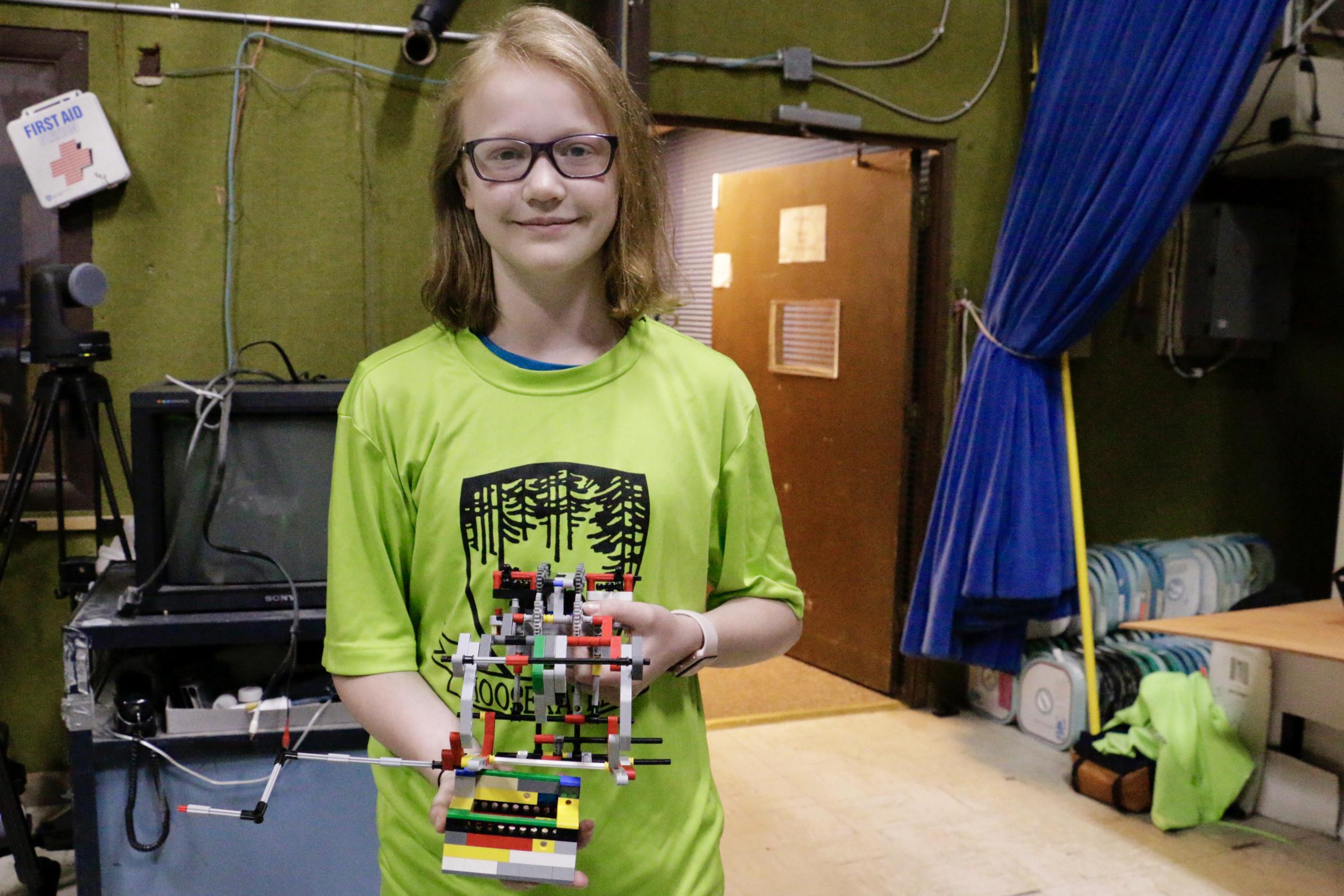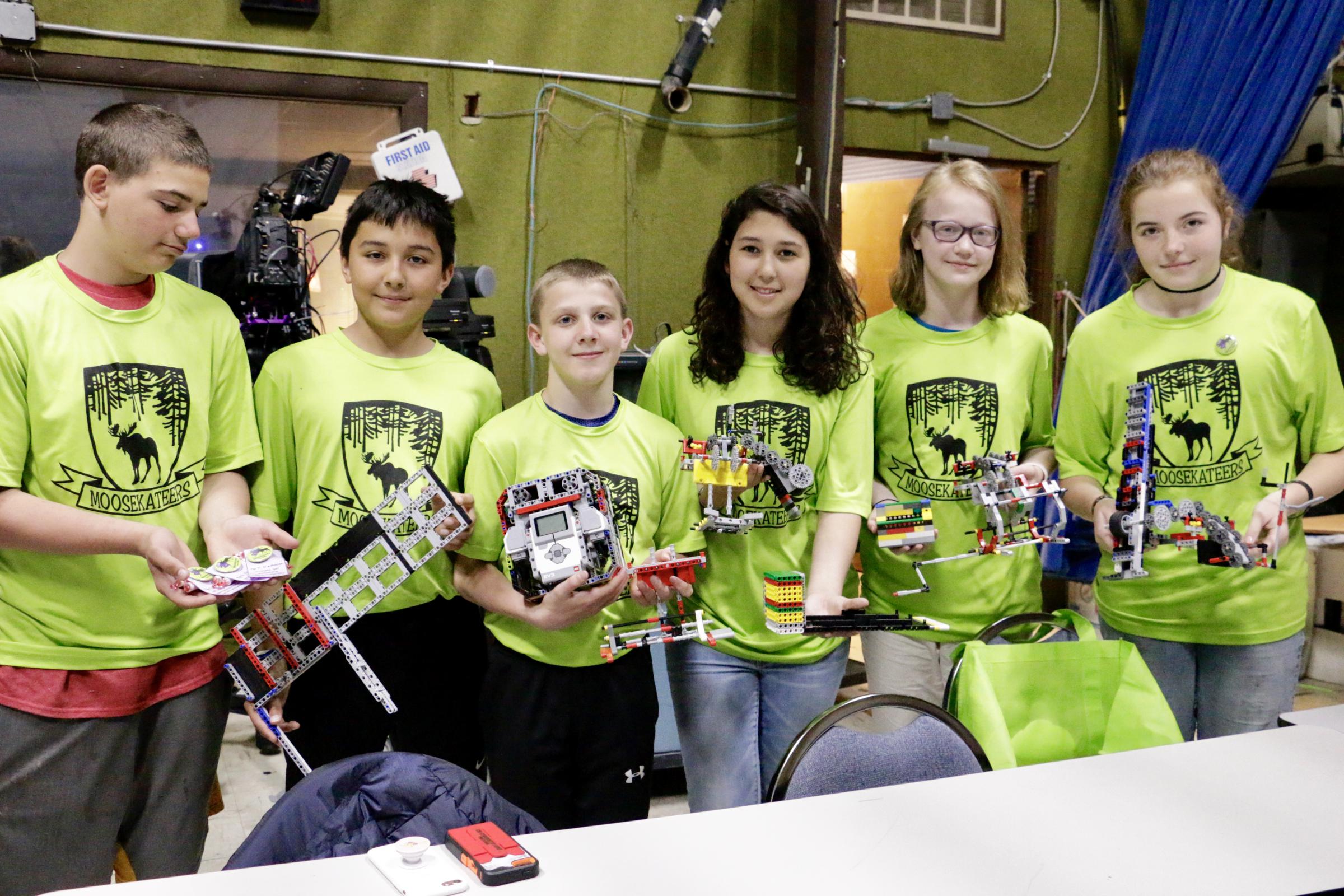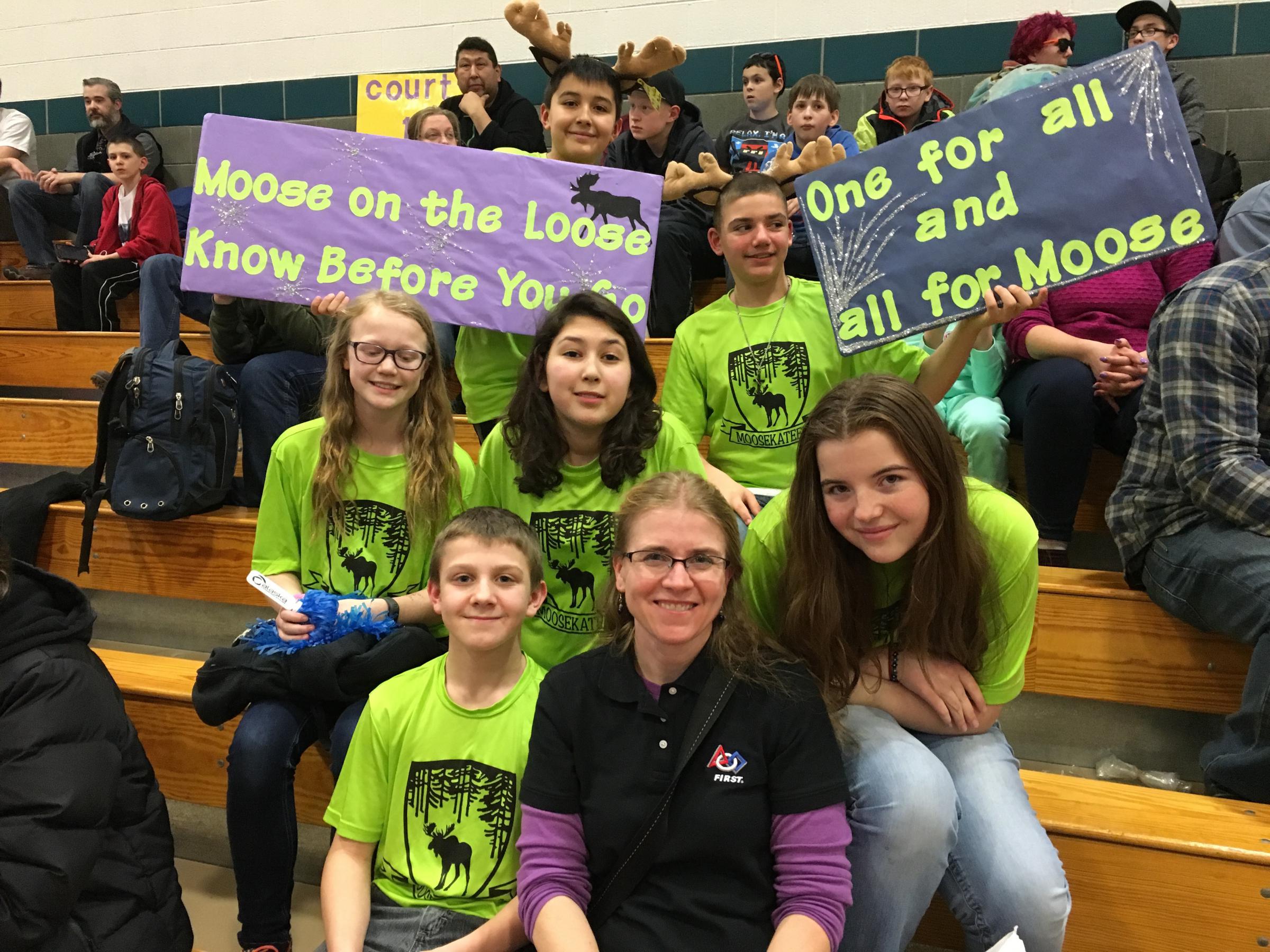
(Christine Trudeau / KYUK)
Bethel’s Robotics team placed second at the state championships this year, which sent them to the national competition in sunny southern California.
The team, known as the Moosekateers, traveled nearly 3,000 miles and enjoyed competing in the National Robotics Championship in San Diego, California. It’s the first time the team has gone to the national tournament, and the competition was steep. The Moosekateers were up against over seventy teams from across the nation.
“They have been to the Alaska state competition for three years in a row now, and their goal is always to get better and get to that next level of competition. And they finally did that this year,” Nicole Smith, coach of the Moosekateers, said. Smith said that the team placed second at state, which got them to nationals. Earning first place at state sends winners to the world championships.

(Christine Trudeau / KYUK)
“These kids were very well prepared,” Smith said. “They had their projects down pat, their presentations down pat. Just looking at the different robots that the team had, some of them had really big robots with attachments that they would put on a cover for the whole robot and it would do things from underneath.”
The Mooskateers had their robot set up on a plywood board with a track attached to the top. The robot was programmed to move around on the track in order to face different challenges.
“It has many pieces on it that the robot will go up to and interact with, whether they’re pushing the lever, or having to pick something up because it’s got a hoop on it,” Smith said.
But a typical robotics season project has many parts to it, the robot just being one. They begin the process in August, focusing on a theme.
This year’s was Animal Allies, where the team identified a problem around how animals and humans interact. The Moosekateers chose something unique to Alaska:
“We wanted to solve the problem of people not knowing what to do if people see a moose, and a lot of moose are around and in the Anchorage parks,” team member Jordan Wheeler said.

(Christine Trudeau / KYUK)
Wheeler said that their team name is a play on words of The Three Musketeers, with their motto being “All for one, and one for Moose”.
Then they had to create a solution for that problem and find a way to share it.
“So we created a webpage and put it on municipalities.org,” Wheeler said. “We also put a video of us sharing this project in the news, so people watching the weekend news could also hear some of the facts.”
The team even adapted “Down By the Bay,” a children’s song, as their theme song.
Wheeler said they also handed out facts printed on cards. One read, “Tip 1: Make lots of noise. We want moose to be aware of humans.” If you flip the card over, you get a treat.
“There are Smarties, so the kids there could know to be smart around moose,” Wheeler said. “We also have a pin that shows a logo on it, and shows where we’re from and a link to our webpage if they need to be safe around moose.”
After sharing the project, they focused on the robot. They created the body, all the attachments, and programmed the robot’s missions. Wheeler said she’s already excited to work on next year’s project.
“It’s going to be about water, and water is a really cool subject,” Wheeler said. “I’m excited to use the new things that we learned this year for the Robot Games, and apply it to next year and build an even better robot.”

Coach Smith said that they hope to use air canister attachments that allow pieces to move separately from the robot to complete challenges, like mini-drones for the robot.
“That’s one of the our things we want to do next year is incorporate the air canisters and that technology,” Smith said.
Smith said they’re pretty expensive, but the team plans to fund-raise in order to get them.




